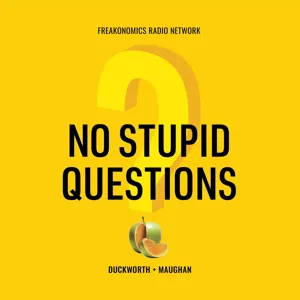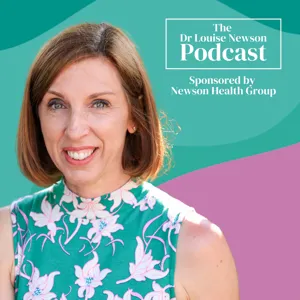Podcast Summary
Nutritional inequality in low-income neighborhoods might not be primarily about food availability, but consumer demand: A recent study found that only 10% of nutritional inequality in low-income neighborhoods can be attributed to food availability, while 90% is driven by consumer demand
The issue of nutritional inequality in low-income neighborhoods, often referred to as food deserts, might not be primarily a problem of limited access to healthy food options, but rather a matter of consumer demand. A recent study published in the Quarterly Journal of Economics, led by economist Hunt Alcott, found that only about 10% of nutritional inequality can be attributed to differences in food availability. The remaining 90% is driven by differences in demand. This finding challenges the common belief that increasing the supply of healthy groceries in low-income areas could significantly reduce nutritional inequality. The study's authors, who included economists, marketing professors, data scientists, and real estate experts, analyzed data from over 61,000 households and 35,000 grocery stores across the United States. Their findings suggest that addressing the root causes of poor nutritional choices in low-income communities might require a different approach than simply increasing the availability of healthy food options.
Exploring the Impact of New Supermarkets on Dietary Habits: People's dietary habits are shaped by their family and community, not just by the availability of supermarkets
A recent study showcased the power of big data in understanding food availability and purchasing habits across an entire country. Researchers used the opening of a new supermarket as an opportunity to examine how the existing population changed their dietary habits. Contrary to assumptions, people did not significantly alter their diets when a new supermarket opened, instead opting to switch to a closer one. The study revealed that people were already traveling long distances to shop for groceries, challenging the notion of food deserts. The fundamental question, according to the speaker's daughter, is how and where people learn to eat nutritiously. The answer often lies in the family and community into which one is born, shaping long-lasting habits.
Opening a supermarket in a food desert doesn't change eating habits: Cultural influences and convenience/affordability of unhealthy food deeply impact eating habits. Policies to increase supply in food deserts may not be effective if demand for unhealthy food remains high.
While opening a supermarket in a food desert area can provide access to healthier options, it doesn't necessarily change people's eating habits due to cultural influences and the convenience and affordability of unhealthy food. The discussion highlights how deeply ingrained our food habits are and how they are influenced by our upbringing and current cultural context. The study also reveals that policies aimed at solving food deserts by increasing supply may not be effective if the demand for unhealthy food is high. For instance, calorie count posting in restaurants has not been found to reduce consumption as intended. Instead, it may lead people to choose less healthy options due to perceived value. Therefore, addressing the issue of food deserts requires a holistic approach that considers both supply and demand factors.
Perceived supply problems might be rooted in demand: People often blame external factors for issues, but understanding the complex interplay of supply and demand can lead to effective solutions.
Many perceived "supply problems" may actually be rooted in demand. For instance, there's an abundance of fact-based news, but it doesn't receive high demand due to the preference for more sensational content. Similarly, bipartisan politicians are in short supply because people don't want them to compromise. The same can be said for skilled trades, where the high supply of workers doesn't meet demand due to societal perceptions. Sleep is another example, as people often complain about not getting enough, but they choose to prioritize other activities instead. This bias towards external factors is a human tendency, as we often prefer to believe that problems are caused by external forces rather than our own choices. However, we are also rational beings, reacting to incentives and costs. Policies like taxes on sugary drinks can help alter behavior by making people consider the costs of their choices. In essence, it's crucial to remember that many issues may not be as simple as they seem and that understanding the complex interplay of supply and demand can lead to more effective solutions.
Taxes on sugar and health: Taxes on sugary foods and drinks, influenced by industry-funded research, can impact public health by encouraging healthier choices, while lack of knowledge and social influences pose challenges to healthy eating
Taxes on sugar-laden foods and drinks, much like taxes on nicotine products, can have a significant impact on public health. Both substances can be addictive, and removing sugar from the American diet could solve a large portion of health issues. However, the research on the topic is not always objective, as some studies have been industry-funded. Human beings have an inherent craving for sugar, making it a challenging habit to break. Policies such as taxing sugary items and subsidizing healthy foods can encourage healthier choices. Some obstacles to healthy eating include a lack of knowledge about preparing certain vegetables and their quick spoilage. Social influences also play a role, as friends and family often consume unhealthy foods.
Addressing the complex issue of poor nutrition in food deserts: A multi-faceted approach is needed to address poor nutrition in food deserts, considering both systemic factors and individual behaviors, including education, income, cultural change, and convenience.
The issue of poor nutrition in food deserts is complex and not solely about access to healthy food. While education and income are correlated with better nutrition, there is also evidence that nutrition levels can influence education and income, creating a vicious cycle. Cultural change, such as making healthy eating and self-care more socially desirable, could also be an effective solution. Additionally, the speakers discussed the challenge of making healthy options more convenient and accessible in the moment, especially when people are busy or on-the-go. Ultimately, addressing the issue of poor nutrition in food deserts requires a multi-faceted approach that considers both the systemic factors and individual behaviors.
Creating an environment for healthy food choices: Making healthy food options convenient and affordable can lead to long-term shifts in behavior and increased demand for healthier foods.
While it can be challenging to change unhealthy eating habits, it's not impossible. The environment we live in plays a significant role in shaping our food choices. The presence of more healthy food options in our neighborhoods can lead to long-term shifts in behavior and increased demand for healthier foods. Habits are hard to break, but they can be changed. The key is to make healthy choices more accessible and less stigmatizing. The failure of New York City's 2008 calorie posting requirement serves as a reminder that simply providing information may not be enough to change behavior. Instead, making healthy options more convenient and affordable can be more effective. Additionally, small changes, such as taking a walk while listening to a podcast or hosting your own podcast, can help break the cycle of unhealthy eating and promote healthier habits.
Rise in Trade School Enrollment and Clarification of a Misconception: Trade school enrollment has been increasing since the late 1990s due to demand for specific trades. A misconception about a commercial was clarified, emphasizing the importance of fact-checking information.
While the cost of a Big Mac may vary greatly depending on where you live, the enrollment in trade schools has been on the rise since the late 1990s due to a previous decline and increasing demand for specific trades. Additionally, a misconception was clarified regarding a commercial featuring a woman smoking out of her trachea, which was actually a public service advertisement from 1996. It's important to fact-check information and consider the sources of data before drawing conclusions. The early bird question for the next episode invites listeners to share their thoughts on whether being an early riser or a night owl is better and why. California ranks number 1 on lists of states with the best diets, but there is a large standard deviation within the state.




